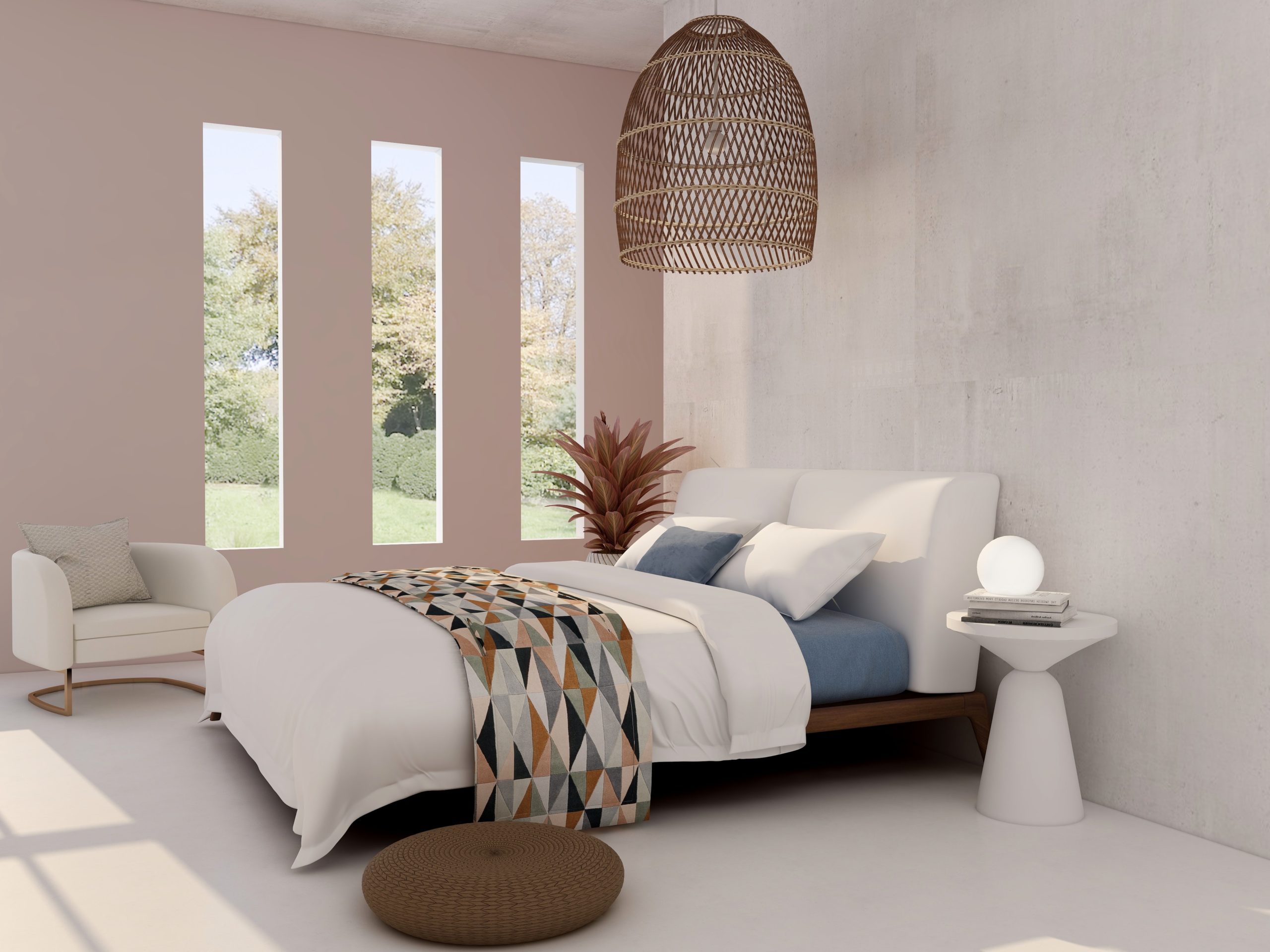Fifteen Popular Interior Design Styles
There are so many different design styles out there, each with its own set of unique characteristics. Some lend to a more bespoke feel, while others feel very on trend. Wherever your taste takes you in the world of design one thing is for sure – to achieve a timeless design, you have to stick to your authentic code.
15 Popular Interior Design Styles
From modern to shabby chic, here’s a breakdown of 15 popular interior design styles and how to implement them in your space.
Minimalist
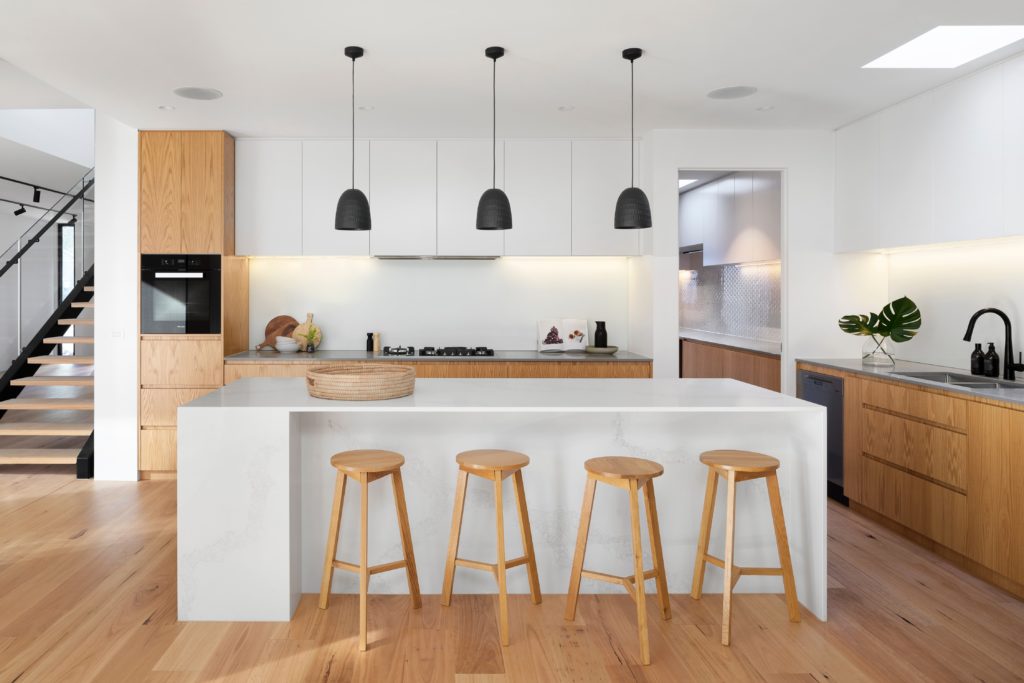
It goes without saying that minimalist design is, well, minimal. This design style is clean and elegant, with simple lines and a refinement that’s worth swooning over. The focus behind minimalism is very much about function over fuss. It’s about letting the architectural details of the house sing. That being said, colors tend to be muted, calming and edited, and you won’t see many busy prints or patterns. Despite all of this, minimalist designs can be very warm and inviting.
Want to get the look? Take a walk around your space and analyze each piece you own. Ask yourself: How does this piece make me feel? Is it streamlined or busy? Does it serve a purpose? Can it live in a closet or cabinet? Does it block the flow of energy through the room? Then, edit, edit, edit.
Contemporary
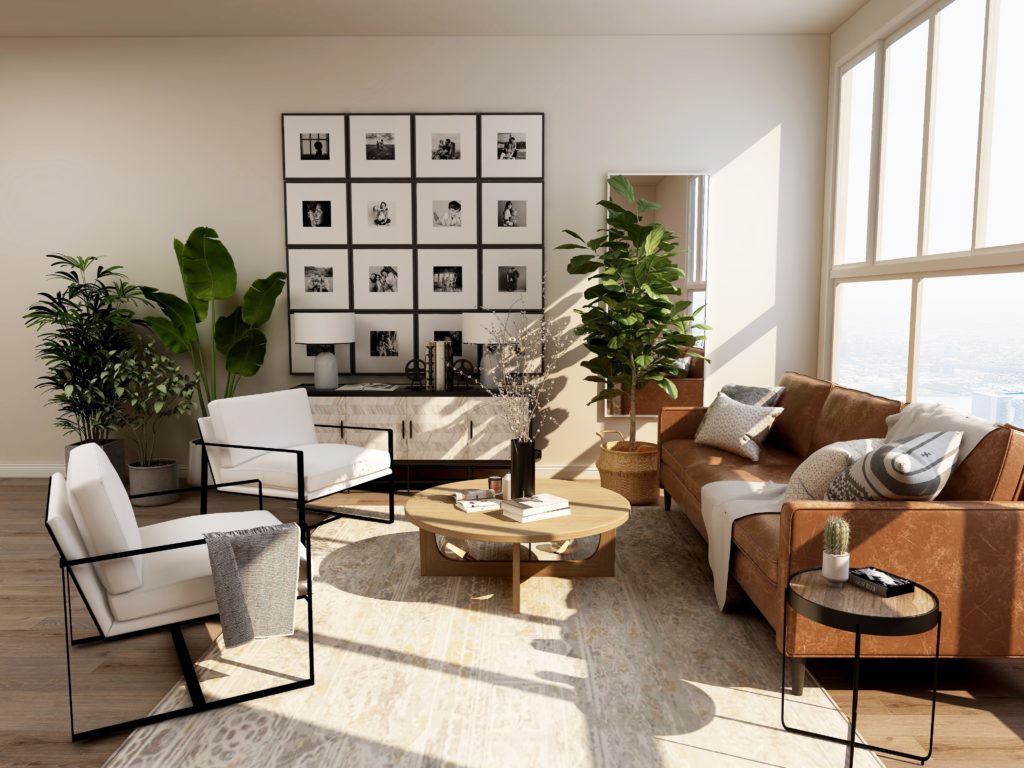
You may hear many people refer to their design style as contemporary. In a nutshell, this means that they enjoy decorating based on trending and evolving design styles. Now, while this might seem like a bad thing to some, it’s actually a great way to decorate your home. Contemporary styles are typically very simple, airy and clean, allowing them to be timeless. Not to be confused with modern design, contemporary interiors have a luxurious warmth to them.
To achieve this look, be very intentional about the things you buy for your space. Stick to pieces that are individual and unique, and that will last. Try to avoid cheap, overly trendy items that you’ll have to replace in a year. Choose furniture with clean lines and textures, and create a color palette of neutrals, blacks and whites.
Traditional
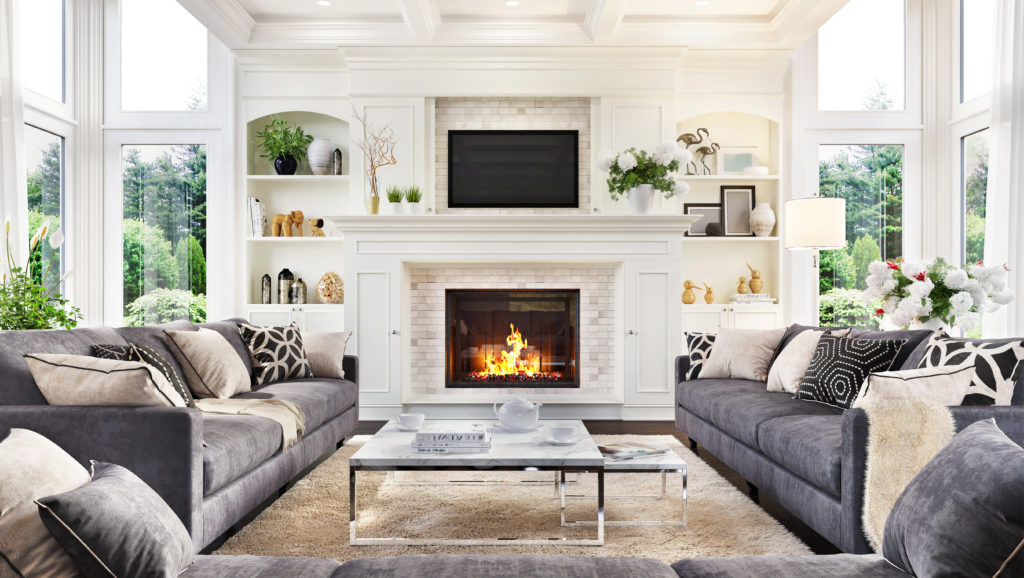
Traditional interior design is not a style of the past, nor is it one of the future. It’s timeless. Perhaps it makes you think of your parents or grandparents style, however that doesn’t have to be the case. With thoughtful editing, it can actually have a very historic elegance and sophistication to it.
We’re seeing traditional design elements popping up more right now, with molding on the walls and classic wallpaper patterns. To introduce this style choose items that speak for themselves. Avoid trending materials like lacquer and geometric shapes, and go for the ornate, vintage materials, as well as timeless patterns like stripes and florals. Still life images and landscapes are also a beautiful way to ground a space and make it feel more traditional.
Transitional
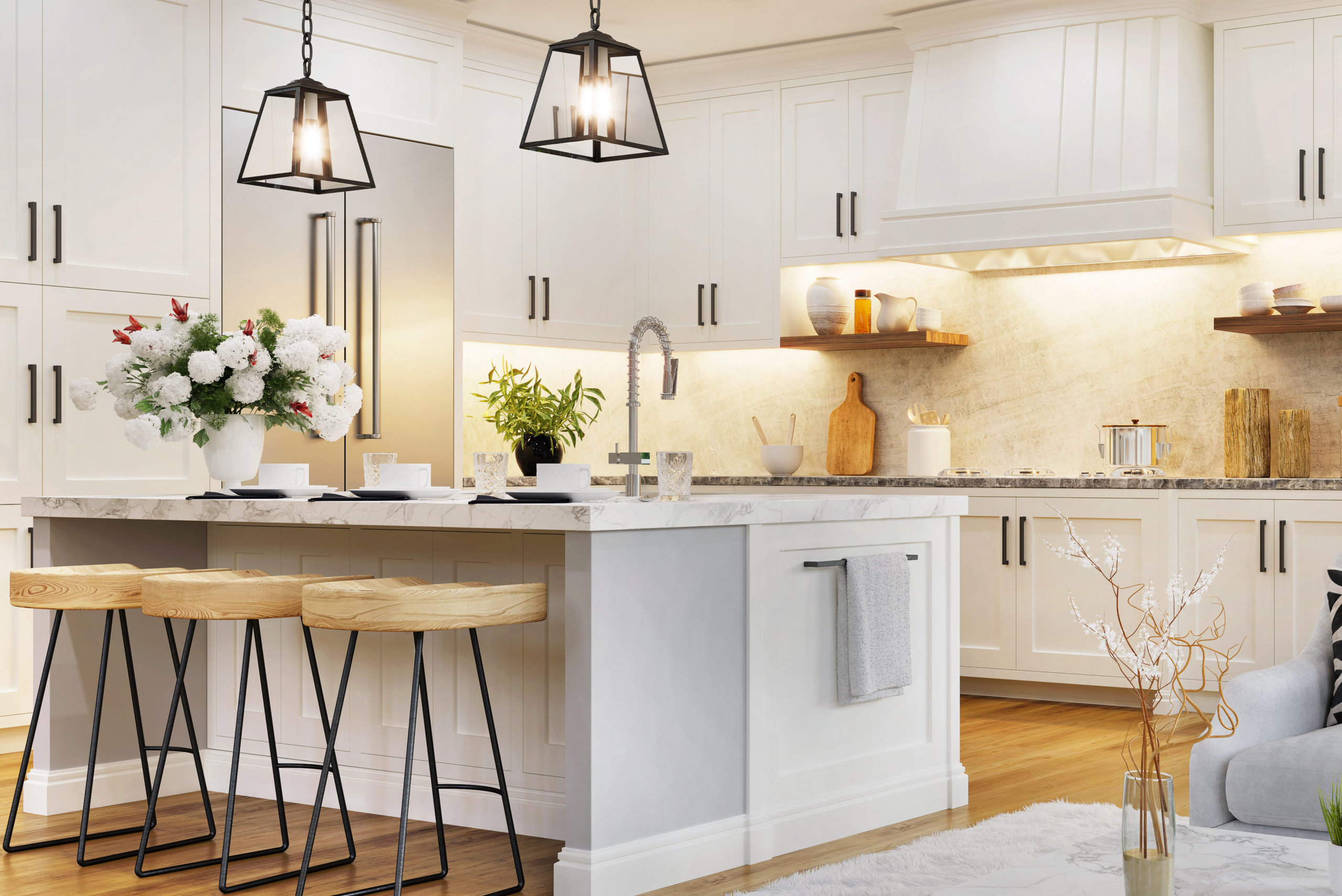
The transitional design style is currently quite a buzzword. It’s a blend of various interior design styles that make a space feel elegant, timeless and contemporary all at the same time. Achieving this look is easy too, because while it’s a buzzword it’s also very unique to you.
To master the look, create a blend of traditional and contemporary elements, accessories and furniture. Warm the space up with cozy and inviting textures, and accessorize with pieces that you’ve collected over time. Lastly, keep the color scheme to a minimum with four to five complementary shades.
Rustic
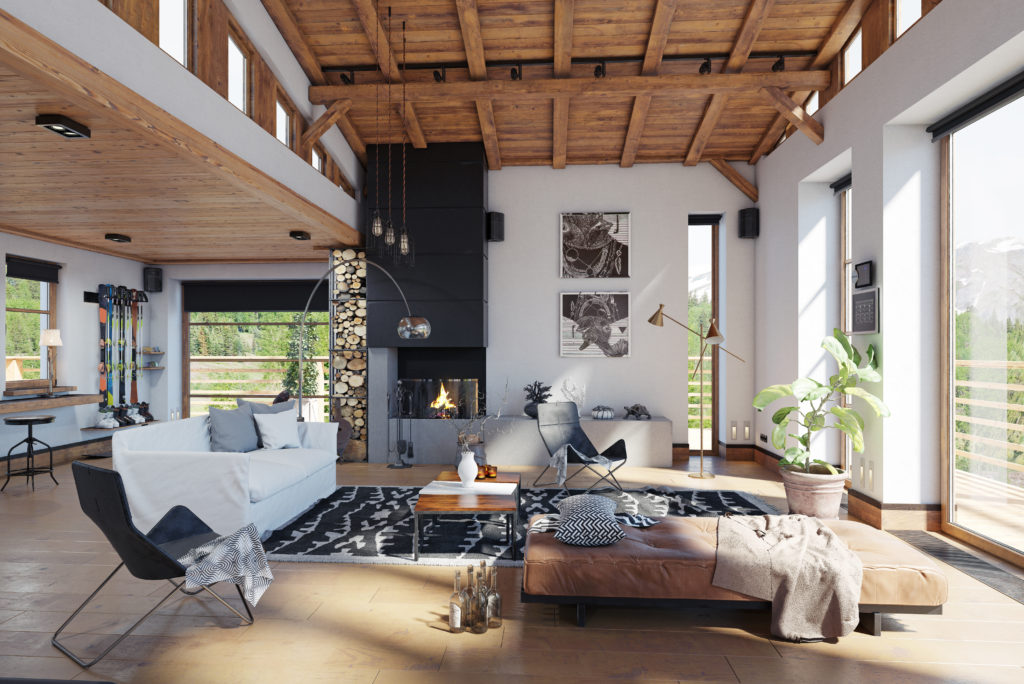
While the rustic style is not trending as heavily as it was 5-10 years ago, it still has a timelessness. This style tends to incorporate more natural and reclaimed materials. It can also have a very industrial feel. And, while it might not be trending now, it will remain a statement look for years to come. For example, a rustic cabin rental in the Rocky Mountains will forever hold its charm.
Went all in on this trend? Don’t worry. You can lessen the impact of an extremely rustic space by creating balance between soft neutrals and rustic elements like exposed beams. Want to add more rustic elements to your space? Choose accent textures like a cowhide rug or a Saltillo blanket, and touches of Southwestern decor.
Shabby Chic
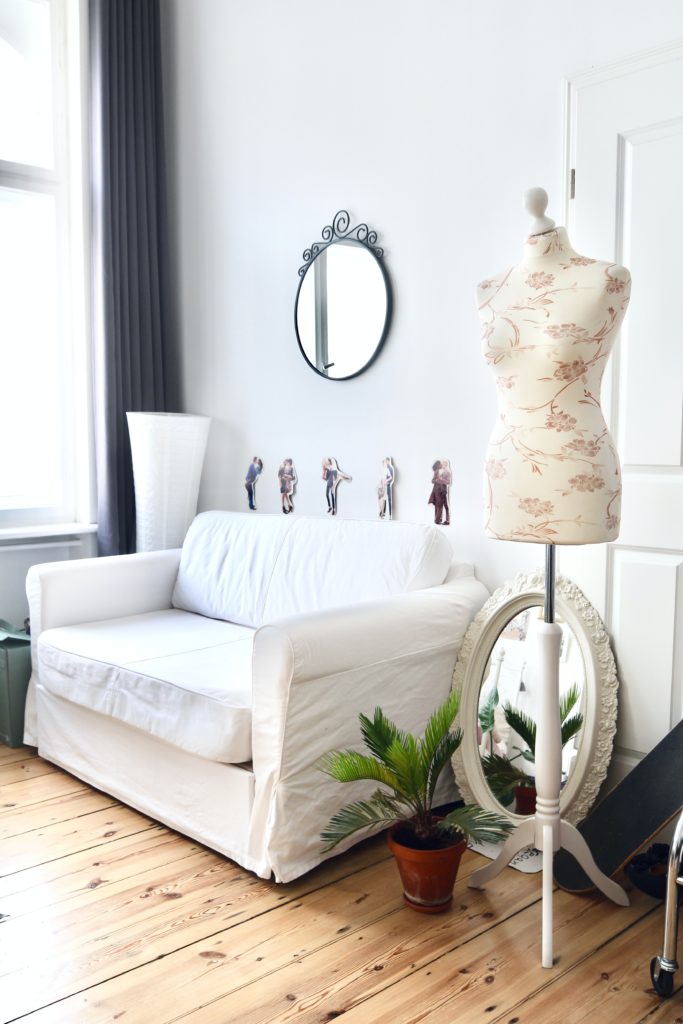
Before you discount this style and move on to the next, know that shabby chic is actually a generational style that can still hold its place in the design world. For example, you may have some family heirloom pieces – and perhaps even restored furniture – that you didn’t even know was shabby chic. This is very much a vintage-inspired style, with an emphasis on more feminine characteristics stemming from a French country style. It’s often bright and airy, while exuding comfort all at the same time.
When decorating for this style, focus on pastels and white tones, with delicate pops of florals and lace. Choose furniture that’s feminine in nature and has a story to tell.
Scandinavian
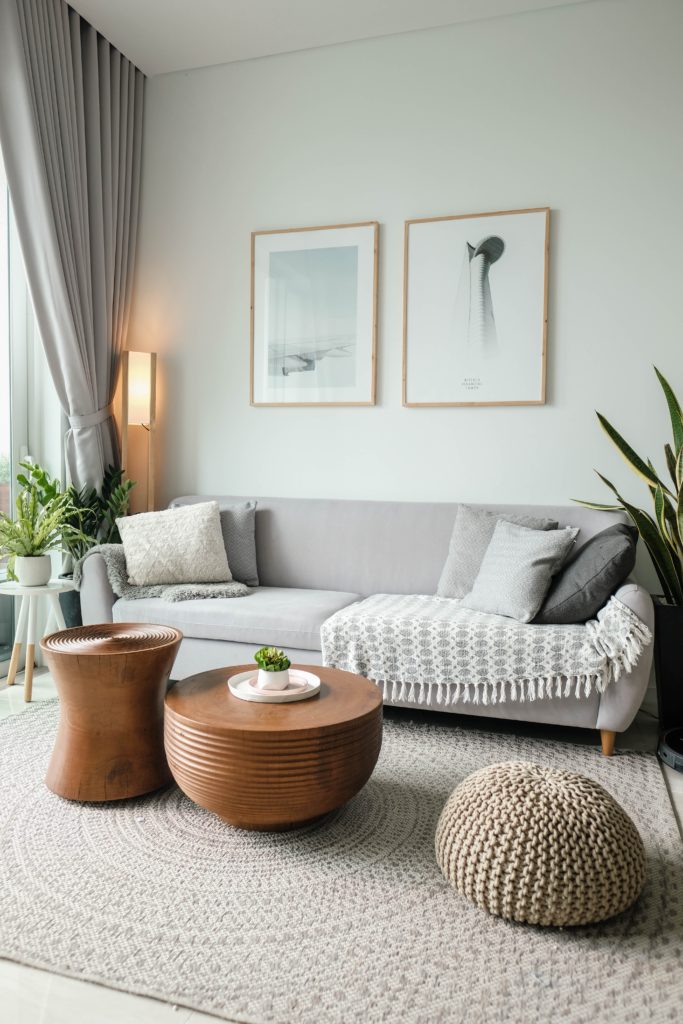
Similar to minimalism, Scandinavian design is a balance of function and form. It’s simplistic, organic and subtle. When it comes to this design style, less is definitely more. Scandinavian design often has a bright and airy color scheme – with whites, grays, soft natural wood tones, and sometimes black accents.
To achieve this design style choose natural textures like leather, fur, woven textiles, etc. Focus on pieces that speak for themselves and also have a purpose, such as statement lighting. And, stick to a soft color palette.
Industrial
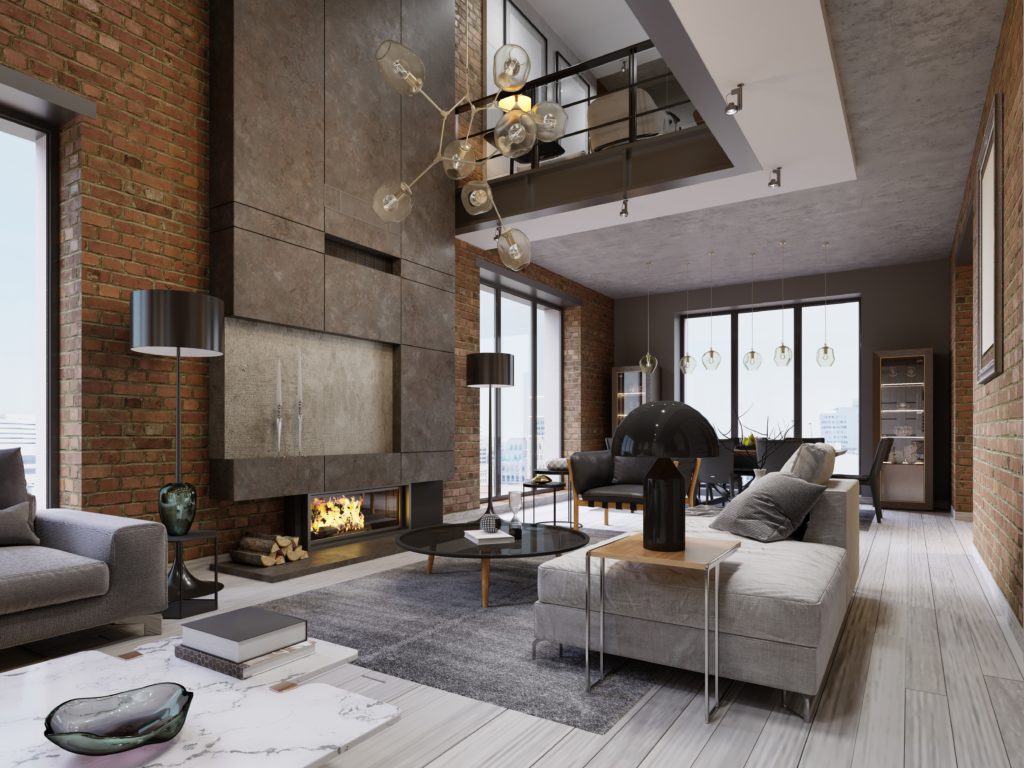
If you’ve watched HGTV home makeover shows, then you’ve probably seen a handful of men say that their style is industrial. That’s because this style has a very masculine quality to it – it’s minimal, neutral and sometimes rough around the edges. This style can be beautiful, handsome and very timeless, however it does have its place. For example, an industrial loft in New York City.
If you don’t love this look but your partner does, or vice-versa, you can calm it down by creating balance. Instead of going all in, try choosing industrial accents like a metal bookcase or vintage/industrial decor.
Bohemian
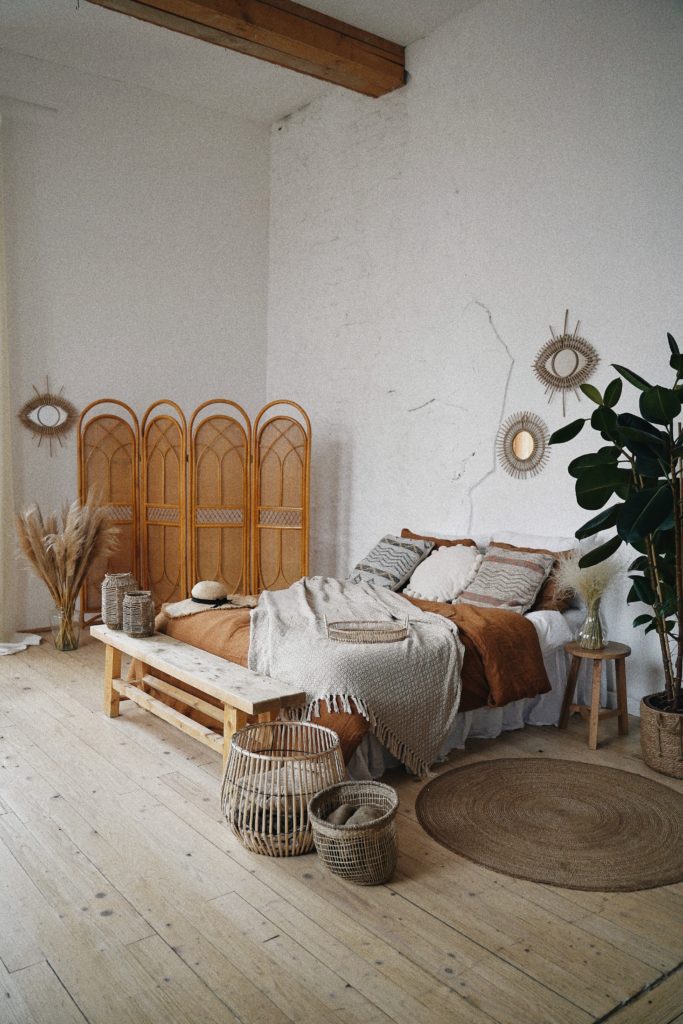
Yes, bohemian decor is trendy but it’s also worldly. When done right, it can become timeless. This interior design style is one of the more maximalist ones listed here. That’s because you can essentially go as bold as you want.
To get a bohemian vibe, curate and collect items that you’ll keep forever. Mix patterns, styles and trinkets, and layer them upon each other to tell a unique story. You can keep colors soft, like the image above, or go big with bold, jewel-like tones. Lastly, don’t forget to add plants that bring the space to life.
Mid-Century Modern
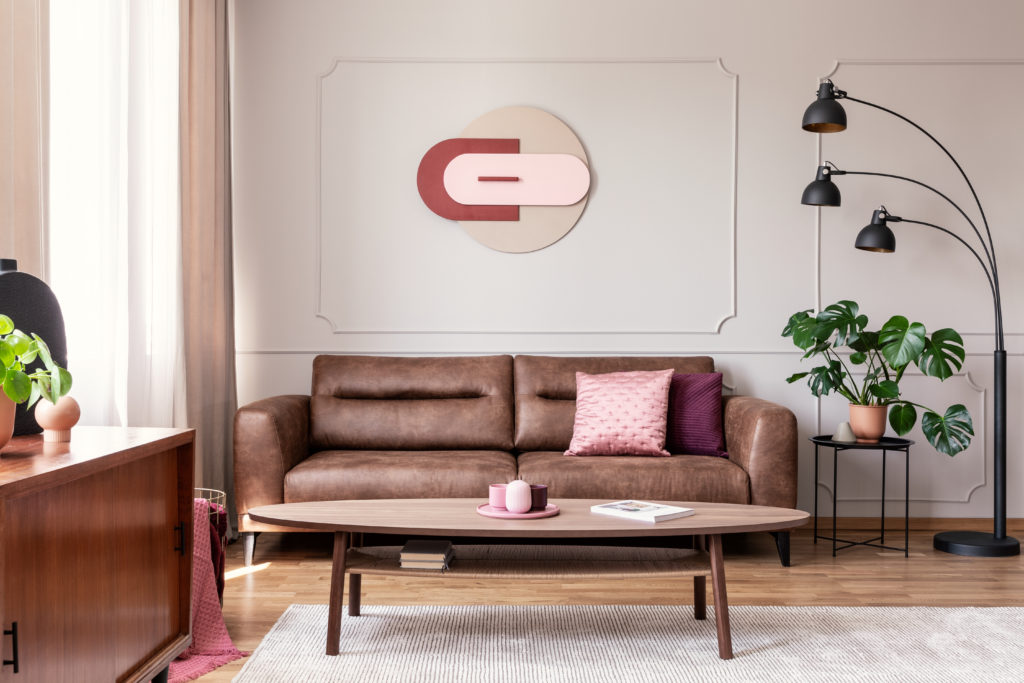
Mid-Century modern is a design style stemming from the 50s and stretching into the 70s. It’s retro, earthy and modern all at the same time. There is a lot of character to this design style even though it may appear simple because of the clean lines and simplicity of the furniture.
To get the look, find vintage pieces that are streamlined and even geometric, without going too traditional or shabby chic. Add muted or moody colors, exciting textures and abstract light fixtures. Mid-century furniture can often be smaller in size, so make sure that you’re not adding it to spaces with extremely high ceilings.
Eclectic
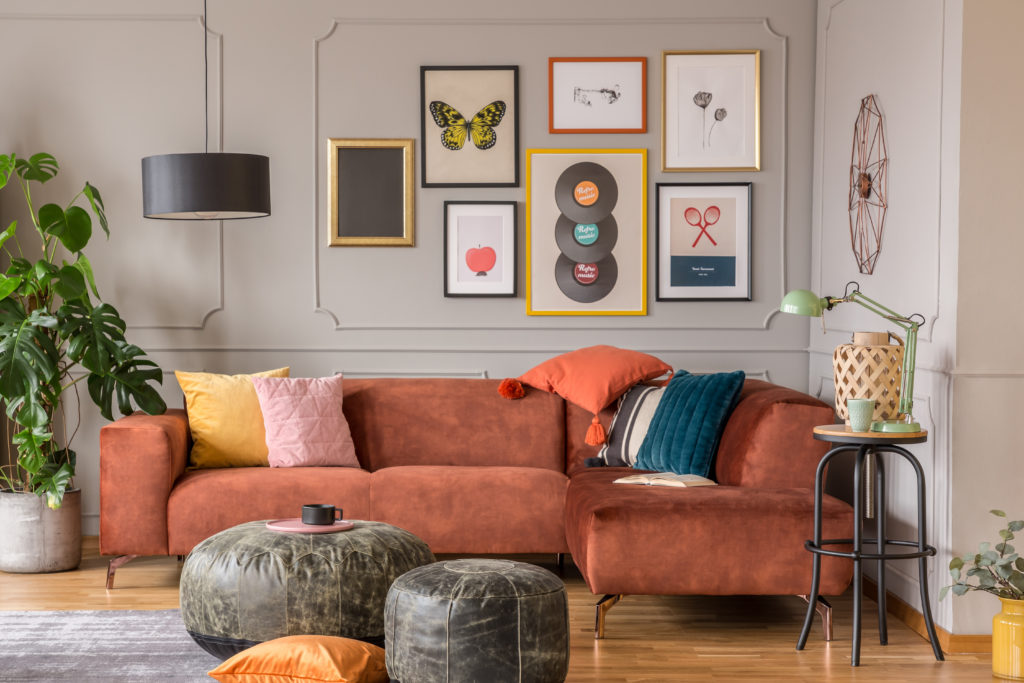
While eclectic design sounds like an “anything goes” option, it’s actually a bit more sophisticated. Yes, definitely choose decor and trinkets to whatever degree your heart desires. Like with any design, translate your personality into the space. This often funky, worldly style can go maximalist or not – it’s up to you. Just be sure to find balance between wild and clean. Watch out for the saying, “too much of a good thing.”
If you’re going for funky/fun furniture and eclectic decor, display it against a more neutral backdrop. Or, if you want to do a wild pattern on the walls, try finding balance with the furniture and decor.
Modern Farmhouse
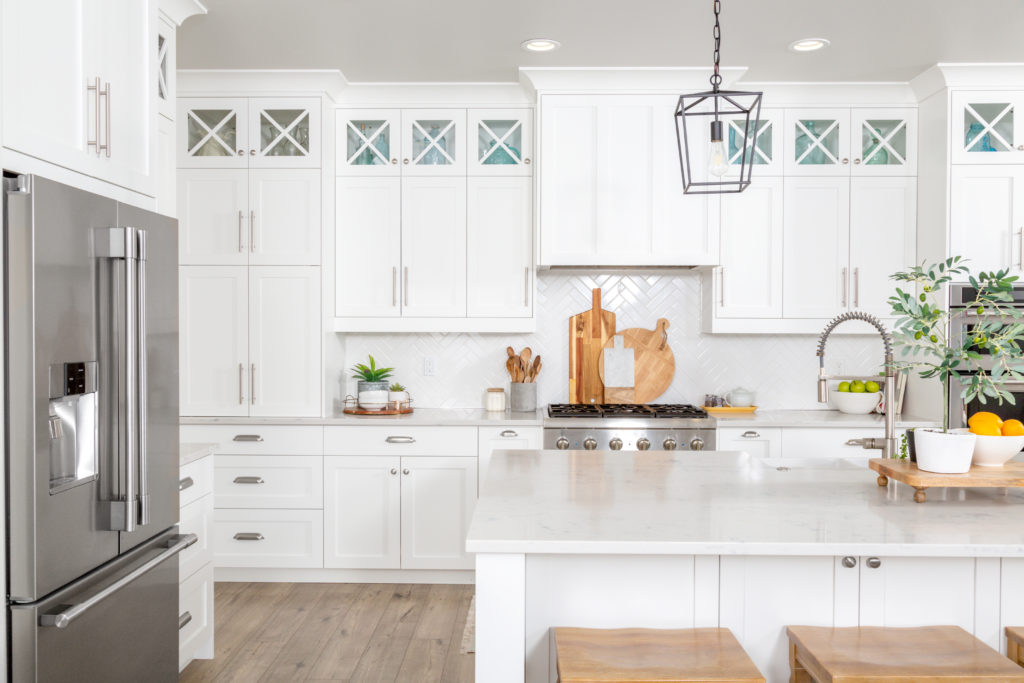
Joanna Gaines. (Enough said, right?!)
Japandi
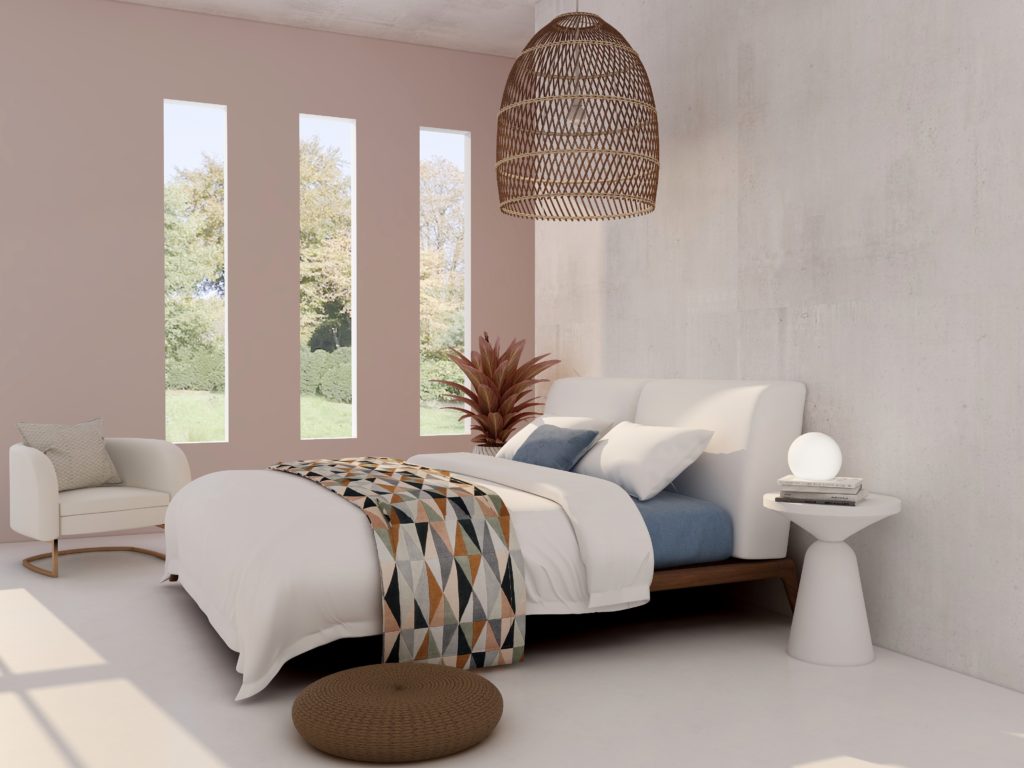
If Japanese minimalism met Scandinavian design and had a child, it would be Japandi. This style is simple and functional, but surprisingly dramatic. This drama comes from the statement that each piece makes in the room. Japandi pieces are rooted in craftsmanship, sustainability and simplicity. Each piece has a captivating energy to it.
To get the look, go for a “less is more” approach, focusing on natural elements, live plants, warm textures, and clean lines.
Glam
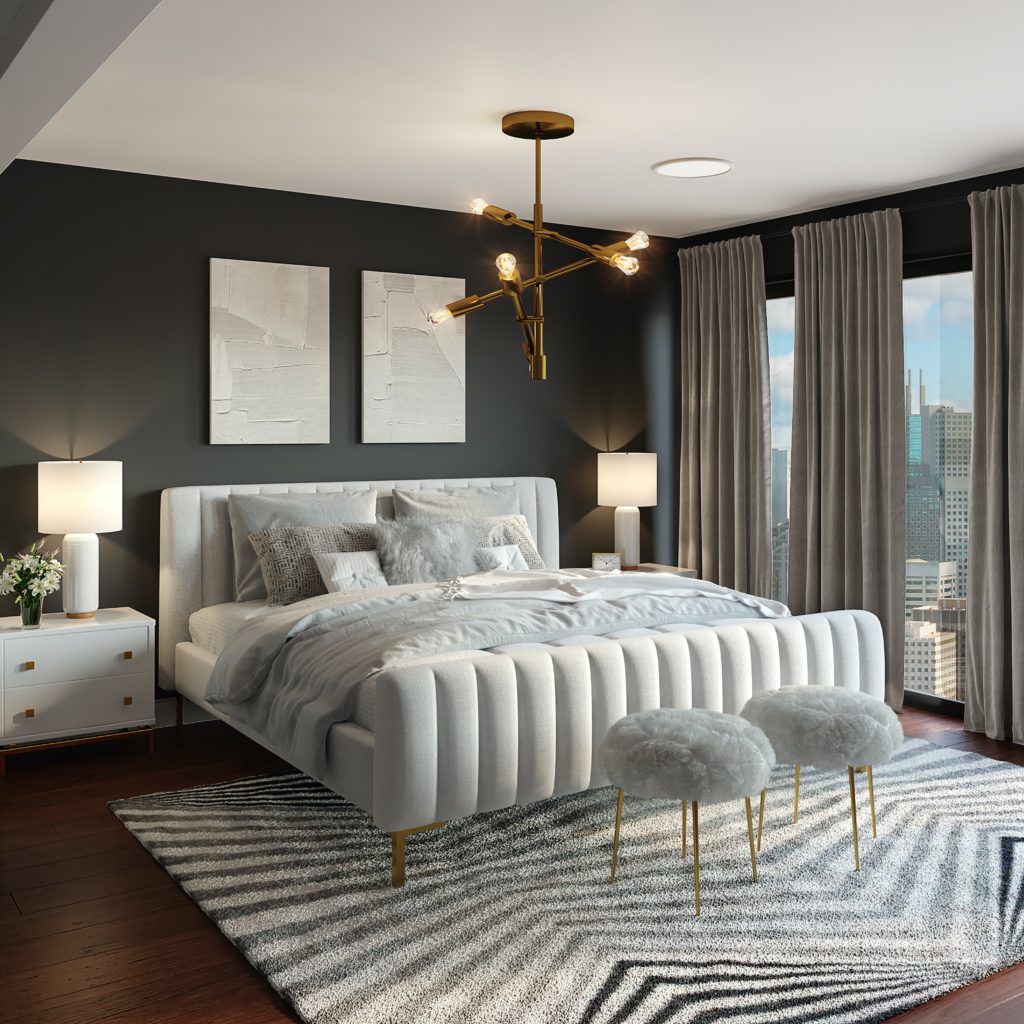
Inspired by art deco and Hollywood glam, this interior design style is sophisticated and timeless. The mixing of dramatic chandeliers, metals, mirrors, crystal details, and geometric and starburst shapes can really create a vibe.
Bold colors and contrasting colors, as well as statement pieces will help you achieve this look. Lastly, there’s texture – add a lot of glamorous textures!
Urban Modern
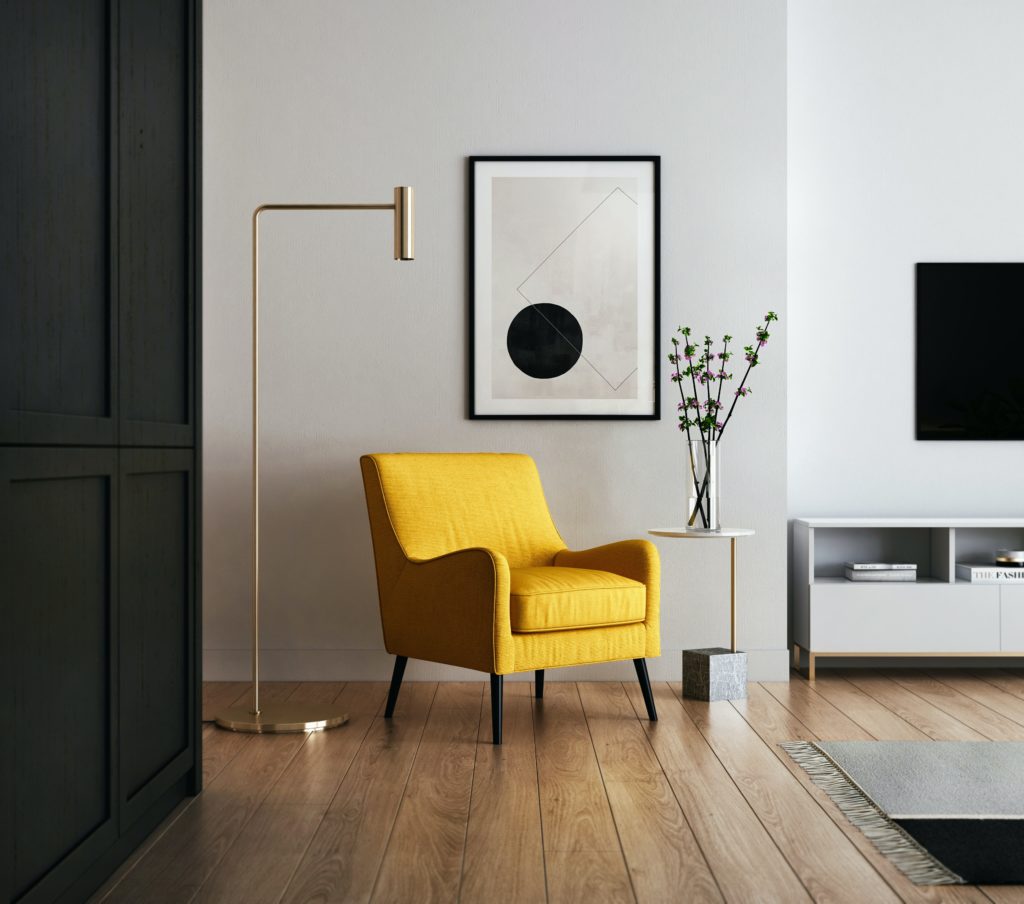
An urban modern space will tend to have architectural details that speak for themselves. The goal in modern design is to let the industrial elements and clean, modern lines do the talking. This look can often go cold and uninviting though.
To warm it up and make the space feel like home, add soft textures, conversational art pieces and decor, and natural colors like creams and browns. Keep the number of accent colors to a minimum so as to not distract away from the artistic elements of the space.
Want to know your interior design style?
Don’t forget to join the Club Haven Newsletter, and follow along on social media @HolisticHavens.
Have more specific questions? Feel free to contact me.
